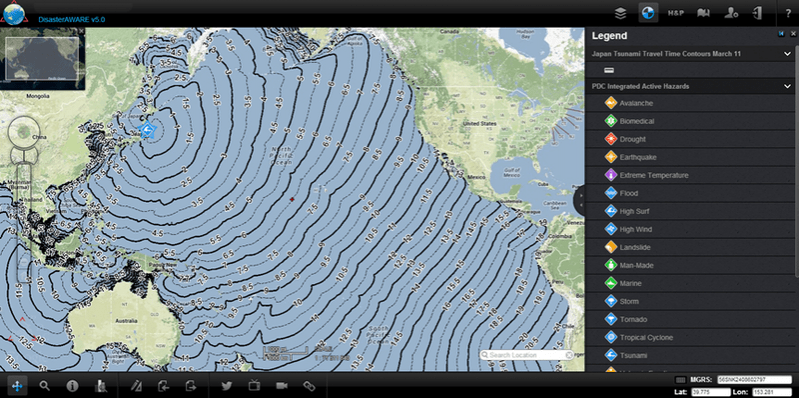April is Tsunami Awareness Month in Hawaii, but as the impact of natural hazards becomes more frequent and more powerful, it is important that families and individuals around the world take steps to increase their overall awareness and preparedness. Pacific Disaster Center (PDC) offers various resources that can help with developing a family disaster plan or preparing a disaster supply kit. Along with taking those fundamental steps, PDC’s website offers resources that can provide guidance for teaching children about natural hazards. However, what matters – what saves lives – is not what is on any website, it is personally taking action. As an example, you might want to conduct an annual disaster-response meeting or even an exercise with your household (or your office). Being as prepared as you can, for any disaster at any time, is the only reasonable plan.
In Hawaii, there is a public service advertising campaign for which the script begins, “Did you know there is no season for tsunamis?” Wherever you share our island home or live near a different sea, you need to be aware of the fact that a tsunami can strike in any month and at any time of any day or night. If you are planning a seaside vacation, you need to know about tsunami risks and keeping yourself and your loved ones safe, just as the local residents do.
On April 1, 1946, a large undersea earthquake near the Aleutian Islands generated a tsunami that traveled nearly 3,000 miles across the Pacific to become Hawaii’s most deadly natural disaster ever. Since then, international and national organizations, such as the Pacific Tsunami Warning Center (PTWC), Alaska Tsunami Warning Center (ATWC), Japan Meteorological Agency (JMA), and others have made tremendous advances in tsunami detection, monitoring, and warning. At the same time, organizations, such as the Pacific Disaster Center have contributed to tsunami safety by developing and enhancing preparedness methods, and by employing the latest information and communication technologies for transforming warning data and speeding it to those who need it. The collaborative work of local, national, regional, and global organizations is helping to reduce tsunami disaster risks.
Like many areas along coasts in the U.S. and abroad, the state of Hawaii conducts annual, statewide tsunami-response exercises to ensure that all civil defense, military and first responder units, as well as Pacific Disaster Center and the Pacific Tsunami Warning Center, are ready to react as needed. However, the safety of your family still depends on what you and your family members know and what you do when threatened by a tsunami, as well as how you prepare for that eventuality.
The links below can help you gather information about tsunamis and other hazards. When you have become familiar with these resources, please, make time to share what you learn with your family. There are tsunami evacuation maps in phone books distributed in the islands (and perhaps in your local phone book elsewhere, too, or on your local government website). These evacuation-zone maps for Hawaii are included in PDC’s Global Hazards Atlas, too. This Atlas link will open a view of the Oahu coastline near Diamond Head with the tsunami evacuation zones and emergency-services layers visible. And during an actual tsunami watch or warning, tsunami travel time (TTT) maps are included in this web-based GIS resource, as well.
Remember, at 11:45 a.m. on the first business day of each month, tsunami-alert sirens in Hawaii are tested. If you live elsewhere, you should familiarize yourself with warning sirens in your community—know what they sound like and when they are sounded for testing purposes. If the alerting sirens sound at another time, immediately turn to your emergency preparedness information source – radio, TV, or a Tsunami Warning Center online – and be prepared to activate your family’s emergency-action plan.
To learn more about tsunamis for the safety of your family, start with these resources:
• Learn about PDC’s Tsunami Awareness Program (TAP) to enhance community resilience,
• Read about the launch of the TAP Kit,
• Find useful TAP instructional materials and resources here,
• View Tsunami Information on the PDC website,
• Access both the static and interactive maps of tsunami evacuation zones,
• Read information about the Indian Ocean Tsunami of December 2004,
• Refer to the International Tsunami Information Center’s 2013 Tsunami Glossary,
• Look at a 7-point list of Tsunami Preparedness steps,
• Read about how parents can help kids learn about disaster preparedness, and
• View a National Geographic video of the 2011 Tohoku Tsunami in Japan.

